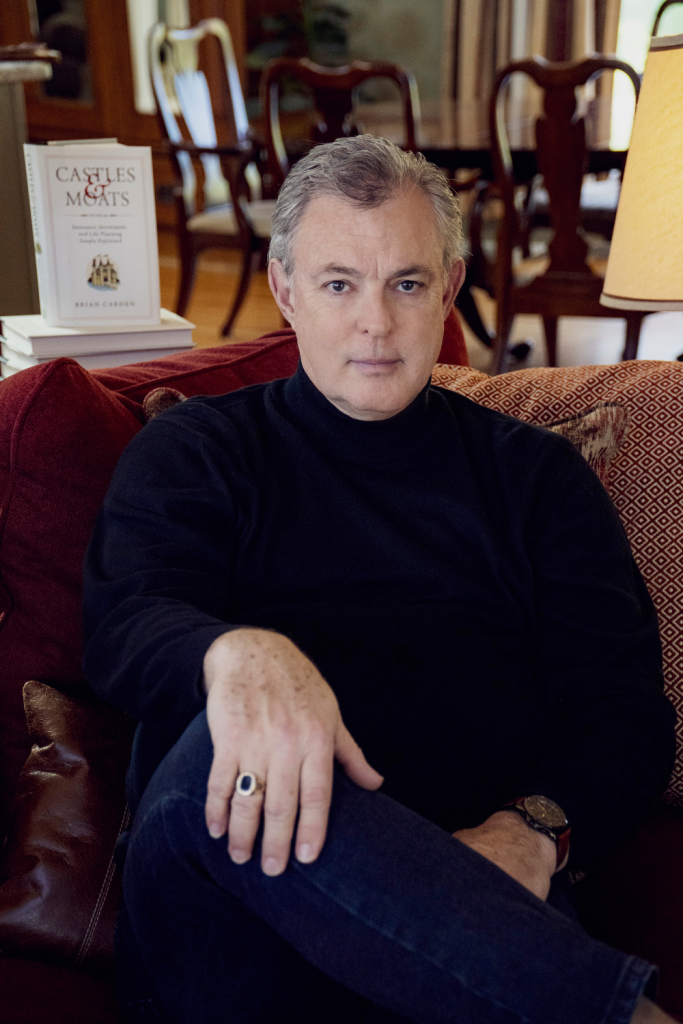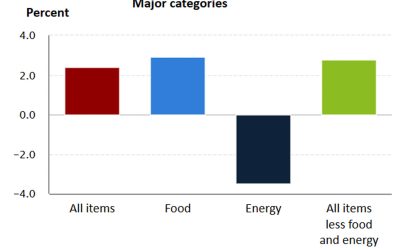Helping clients build ‘castles and moats’
Helping clients build ‘castles and moats’

Brian Carden • Brentwood, TN
Brian Carden, Financial and Insurance Advisor • Madison Avenue Securities LLC
Read full biography below
Proactive Advisor Magazine: Brian, talk about how your career in financial services has evolved.
 I began my career in 1983, while I was working in the retail field, by responding to a flyer placed on my apartment door by a recruiter. Little did I know what was to come by taking that first step. I have now been in the financial-services industry for 40 years, with 25 years as a full-service financial and insurance advisor.
I began my career in 1983, while I was working in the retail field, by responding to a flyer placed on my apartment door by a recruiter. Little did I know what was to come by taking that first step. I have now been in the financial-services industry for 40 years, with 25 years as a full-service financial and insurance advisor.
I am proud to have worn several different hats in financial services. These positions all came with unique perspectives on the industry and provided in-depth knowledge of many facets of the business. I first worked as an internal wholesaler marketing group health plans. I later joined a multi-line insurance company, gaining valuable experience in consultative insurance planning and sales, as well as working with fixed annuities, larger group health plans, and defined benefit and defined contribution retirement plans. During this period, I achieved quite a bit of success, became very knowledgeable about retirement planning, and honed my sales and presentation skills to individual clients, businesses, financial advisors, and plan participants. I later owned my own insurance brokerage and worked for a bank as an investment and retirement-plan specialist.
Notably, I also worked with a major national firm that was at the forefront of the industry transition in the late 1990s to true financial planning. This replaced the largely transactional and siloed approach of the past with an interactive process that took a holistic view of client needs. This was the point in my career when I started to view investments, insurance, and other financial services as not just products but more as solutions to be used cohesively in formulating a comprehensive financial plan.
How do you see your mission in working with clients?
I have lived through many changes in our industry and evolved greatly myself—picking up new skills and knowledge along the way. I think where many of my peers tend to focus on either their insurance or investment backgrounds, I believe my strength lies in the ability to evaluate the entire universe of resources available and put together a customized approach to financial and life planning for each client I work with.
My father worked for many years as a successful salesman in the industrial tool and equipment field. He inspired me in many ways, especially with his work ethic and caring, outgoing nature. I will never forget when he once said, “Son, I never worked a day in my life. I just got up in the morning, got dressed, and went out to help people.”
I see my mission similarly. It is a calling to serve clients, helping them improve their financial and life planning as much as I can. I see myself as a “professional explainer,” especially when it comes to separating fact from fiction in the barrage of information people consume today. I wrote a book last year called “Castles and Moats: Insurance, Investment, and Life Planning Simply Explained.” In it, I explain why I consider myself a “protection first” comprehensive financial advisor. The title of the book is a metaphor that is at the foundation of how all of a client’s insurance, investment, retirement, and life planning should work. Simply put, if you’re going to build a castle of financial wealth, you need to build a moat of protection around it.
What is your approach to financial and retirement planning?
I believe that my strengths lie more in “right-brained planning”—acting as more of a financial psychologist than a pure number cruncher. Yes, conducting thorough fact-based discovery and quantitatively analyzing a client’s current and potential future financial situation are tremendously important. And our process covers that exhaustively. But math is just math. Planning is strategic, learning where the client’s pain points and aspirations lie—their fears, their wants, and their dreams. They’re walking into a new world full of minefields. How retirement worked for their parents or grandparents doesn’t necessarily work in today’s world.
I think a financial plan should not be thought of like a linear game such as checkers, but rather a strategic game such as chess. We should help clients plan a series of moves—using all available resources—surrounded by a unique set of strategies. Each move now should be designed to set up future moves to increase the chance of winning the game—that is, achieving financial security.
In retirement-income planning, I believe in the concept of the velocity of money—having each dollar serve more than one purpose. If we have built a plan correctly, we should be looking at a predictable outcome. We should have minimized or mitigated the things that could go wrong. A client’s income stream should flow from a few different places—I call it “mailbox money”—each representing a different financial strategy. In total, these different “buckets of money” create an income that will stick with a client or couple throughout their retirement lifetime. It is that stable source of cash flow, not a pile of accumulated money, that makes the difference. And that is the result of a variety of strategies, just like chess.

Describe your investment philosophy.
My investment philosophy is pretty simple on the surface, but it involves a lot of work and due diligence in the background. I use as many tools and strategy and product experts as I need to build the best plan possible for each client. I am agnostic when it comes to specific product or strategy recommendations. Once I have completed the due diligence, I place a great deal of value on the informed recommendations of specialists in each discipline. This includes the TAMPs and third-party managers I consult on investment strategies; insurance professionals at a brokerage general agency where I’ve developed a great relationship with the entire staff; and an FMO or field marketing organization for fixed indexed annuities. I use a specialty FMO for Medicare and other senior products.
Each organization has a staff that I rely on for designs and recommendations based on my data collection and analysis for each client and their particular financial situation. My experience as a wholesaler is invaluable in this process as I speak their language and understand how to get the most out of each resource.
In line with my “Castles and Moats” mindset, risk management is a driving force in building client investment plans. I believe in the broad principles of modern portfolio theory, meaning that each investor client should have a plan that is diversified over several broad asset classes, with their specific allocations driven by their risk tolerance, risk capacity, and time horizon. The concept of the sequence of returns is also important, especially for retirees. Clients need to understand that chasing the highest returns each year is not a winning strategy in the long term. What is more important is to have a risk-managed investment approach and allocation that seeks to mitigate the inevitable downturns in the markets and smooth volatility over the long run.
“I consider myself a ‘protection first’ comprehensive financial advisor.”
How would you like clients to perceive the experience of working with you?
I want my clients to know that I work under a fiduciary standard. This means acting in their best interests with every product or strategy that I recommend. I also hope they come to quickly understand that they are working with someone who has built an experience-based storehouse of knowledge that will be put to use on their behalf, and explained in plain language they can understand. When it comes to money, investments, and retirement planning, there is no secret sauce. There’s effort, strategy, planning, and a commitment to the client’s financial goals. Working with an advisor should be an experience that reflects mutual trust and an interactive relationship—while building a plan for a better financial life.
 Brian Carden is a financial and insurance advisor based in Brentwood, Tennessee. He offers guidance on, as he says, “virtually any insurance, investment, and financial need an individual, family, or business owner might have.”
Brian Carden is a financial and insurance advisor based in Brentwood, Tennessee. He offers guidance on, as he says, “virtually any insurance, investment, and financial need an individual, family, or business owner might have.”
Mr. Carden was raised in Knoxville, Tennessee. His father was an industrial equipment and tool salesman, and his mother was a homemaker. Growing up, Mr. Carden enjoyed playing sports, participating in his church’s youth group, and playing guitar. He says, “We had a great family life and enjoyed vacations and sports together. My father coached for teams my brother and I played on, and my mother worked the concession stands.”
Mr. Carden attended the University of Tennessee, Knoxville, where he graduated with a degree in business administration and marketing. He says he was “working in retail about 30 hours a week while carrying 15 to 18 credits” during most of his time in college. Mr. Carden’s financial-services career began when he was recruited to join an insurance company as an internal wholesaler. He has held a variety of industry positions and acquired deep knowledge of financial planning; investment and insurance products and services, including annuities; group health plans; defined benefit and defined contribution retirement plans; strategies for long-term care, Medicare, and Social Security; and estate planning. The senior demographic segment is an increasingly important focus of his practice.
Mr. Carden has owned his own insurance brokerage and worked with a major national financial-services company that was at the forefront of the industry’s transition to financial planning. He has 40 years of industry experience and has been an independent advisor for 25 years. He has been published and quoted in major financial publications and recently wrote the book, “Castles and Moats: Insurance, Investment, and Life Planning Simply Explained.” He enjoys spending time with family and friends, playing music, writing and reading, golfing, and working out.
Disclosure: Securities and advisory services offered through Madison Avenue Securities LLC. Member FINRA/SIPC, a registered investment advisor.
Photography by Taylor Ballantyne / MediaRow
QUICK TIP

The advantages of working with TAMPs
Brian Carden is a financial and insurance advisor based in Brentwood, Tennessee. He says that his philosophy about developing and executing an investment plan can be summed up simply: “I use as many tools and strategy and product experts as I need to build the best plan possible for each client.”
He adds, “I am agnostic when it comes to specific product or strategy recommendations. Once I have completed the due diligence, I place a great deal of value on the very informed recommendations of specialists in each discipline.” He finds the process and results of working with TAMPs (turnkey asset management programs) particularly rewarding, citing several benefits:
- Asset management by dedicated professionals who have access to sophisticated research and quantitative analysis.
- The ability to provide clients with highly diversified portfolios. This includes diversification by asset classes, different strategic approaches, and management styles.
- Consultative wholesaler and research teams that provide valuable strategic and asset-allocation guidance in structuring client portfolios.
- Back-office support and technology that facilitates client onboarding and performance reporting, as well as integration with other technology platforms.
- Speed, liquidity, and efficiency in making portfolio adjustments, if needed.
- Constant portfolio monitoring and reliable execution that he says “allow me to spend more of my time with clients.”
RECENT POSTS








